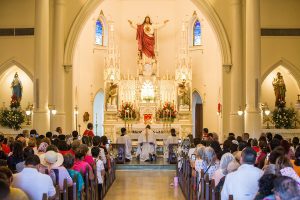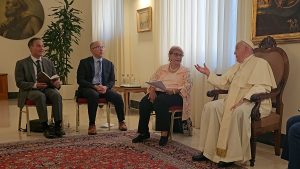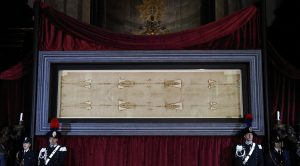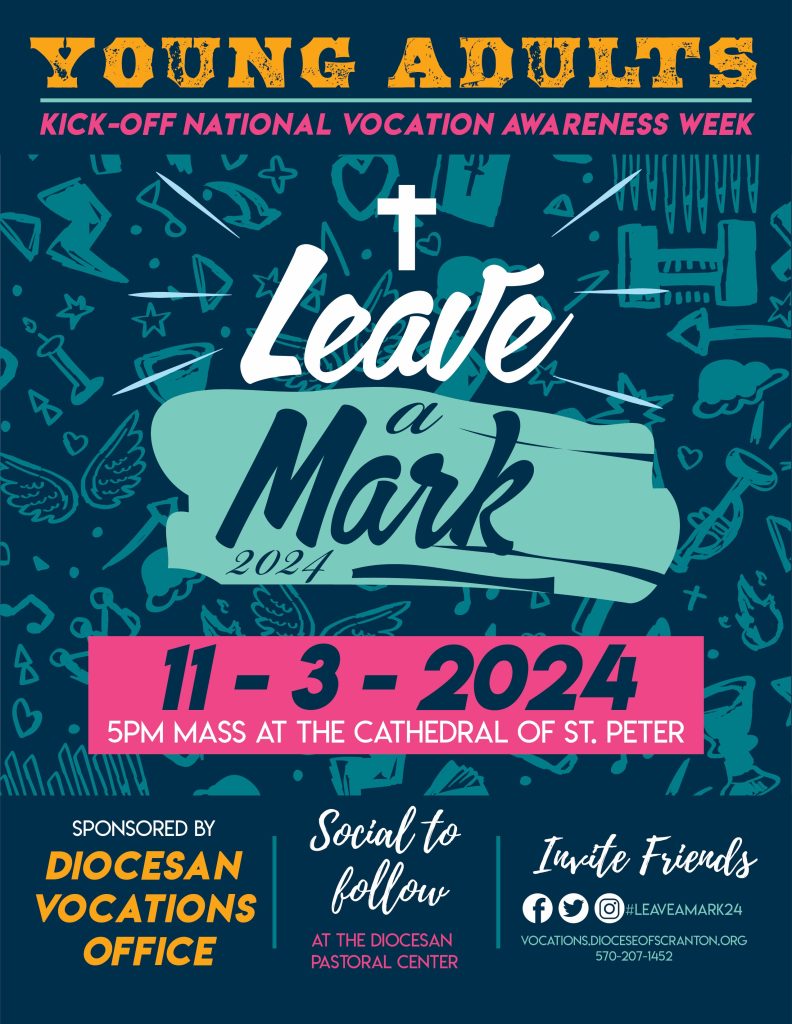(OSV News) – The organization that coordinates efforts related to the National Eucharistic Revival announced Sept. 3 the launch of the Society of the Eucharistic Heart of Jesus to boost revival efforts.
In an email to supporters, Jason Shanks, CEO of National Eucharistic Congress Inc., described the society as a way people “can help and remain closely connected to the many ongoing efforts of charity and evangelization, of pilgrimage and procession – of mission – to bring Christ to every corner of our nation.”

Joining the society requires a minimum $10 monthly donation to National Eucharistic Congress Inc. Members will receive a copy of “For the Life of the World: Invited to Eucharistic Mission” by Bishop Andrew H. Cozzens of Crookston, Minnesota, who serves as board chairman of the National Eucharistic Congress Inc., and Tim Glemkowski, the founding CEO of National Eucharistic Congress Inc., who served in that role until Aug. 1.
Society members also receive access to the National Eucharistic Congress digital platform, which includes all of the talks from the July 17-21 National Eucharistic Congress in Indianapolis, as well as additional Eucharist-related content.
Information on joining the society can be found at www.eucharisticcongress.org/donate.
Shanks, who took the helm of National Eucharistic Congress Inc. Aug. 1 after serving as president of the OSV Institute for Catholic Innovation in Indiana, described the revival’s next phase as “off to an amazing, grace-led start,” and he encouraged society members to “use the talks from the Congress and the wisdom of Bishop Cozzens’ and Tim’s book to form your heart for mission.”
National Eucharistic Congress Inc. oversaw the planning and execution of this year’s National Eucharistic Pilgrimage and National Eucharistic Congress, two major components of the National Eucharistic Revival. A three-year initiative of the U.S. bishops, the revival launched in 2022 with the aim of deepening Catholics’ understanding of and love for Jesus in the Eucharist.
The revival is now focusing on its Year of Mission, in which Catholics are encouraged to become “Eucharistic missionaries” who share the reality and impact of Jesus’ real presence in the Eucharist with others. This is especially realized through the revival’s “Walk with One” campaign, which asks Catholics to identify one person whom they can accompany on their faith journey and deepen their relationship with Jesus Christ.
The National Eucharistic Congress Inc. nonprofit was formed in 2022 to support the bishops’ vision for the revival.
Although the bishops’ revival initiative originally was set to formally end with the feast of Pentecost 2025, Shanks told OSV News in August that the organization’s work will continue beyond June and is expected to include future national Eucharistic congresses.
In the Sept. 3 email to supporters, Shanks described the revival’s goal as “re-centering the life of the Catholic Church in America on Jesus in the Most Blessed Sacrament.”
“This is where every great Catholic saint and every great Catholic mission began, so it’s where we begin as well,” he wrote. “As we heard time and again at the Congress, He sustains us in the Most Blessed Sacrament as we set out on mission to love and serve Him by loving and serving those made in his image.”





 Young adults are invited to join the Diocesan Vocations Office at the ninth annual Leave a Mark Mass on Nov. 3 to kick off National Vocation Awareness Week.
Young adults are invited to join the Diocesan Vocations Office at the ninth annual Leave a Mark Mass on Nov. 3 to kick off National Vocation Awareness Week.